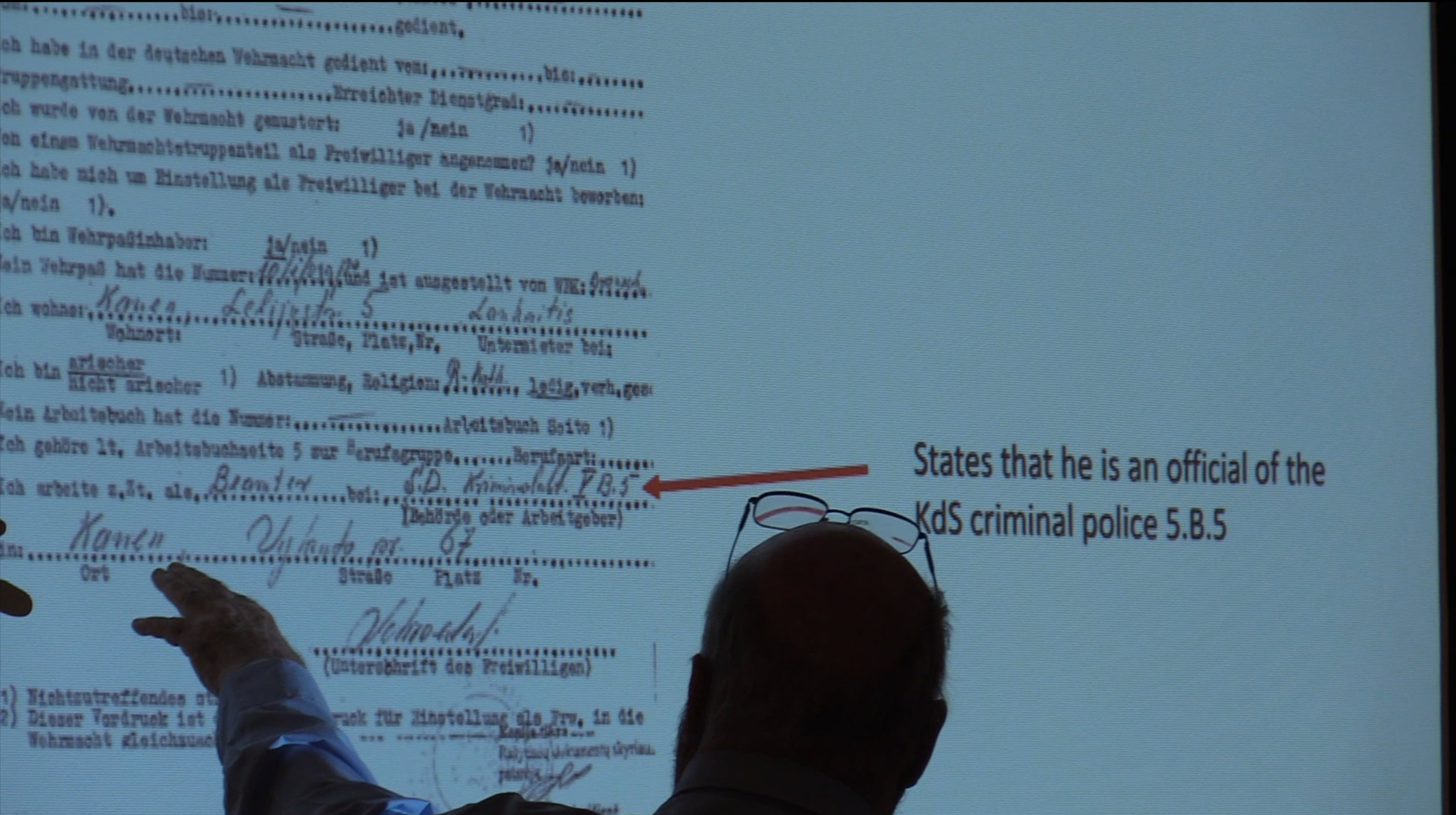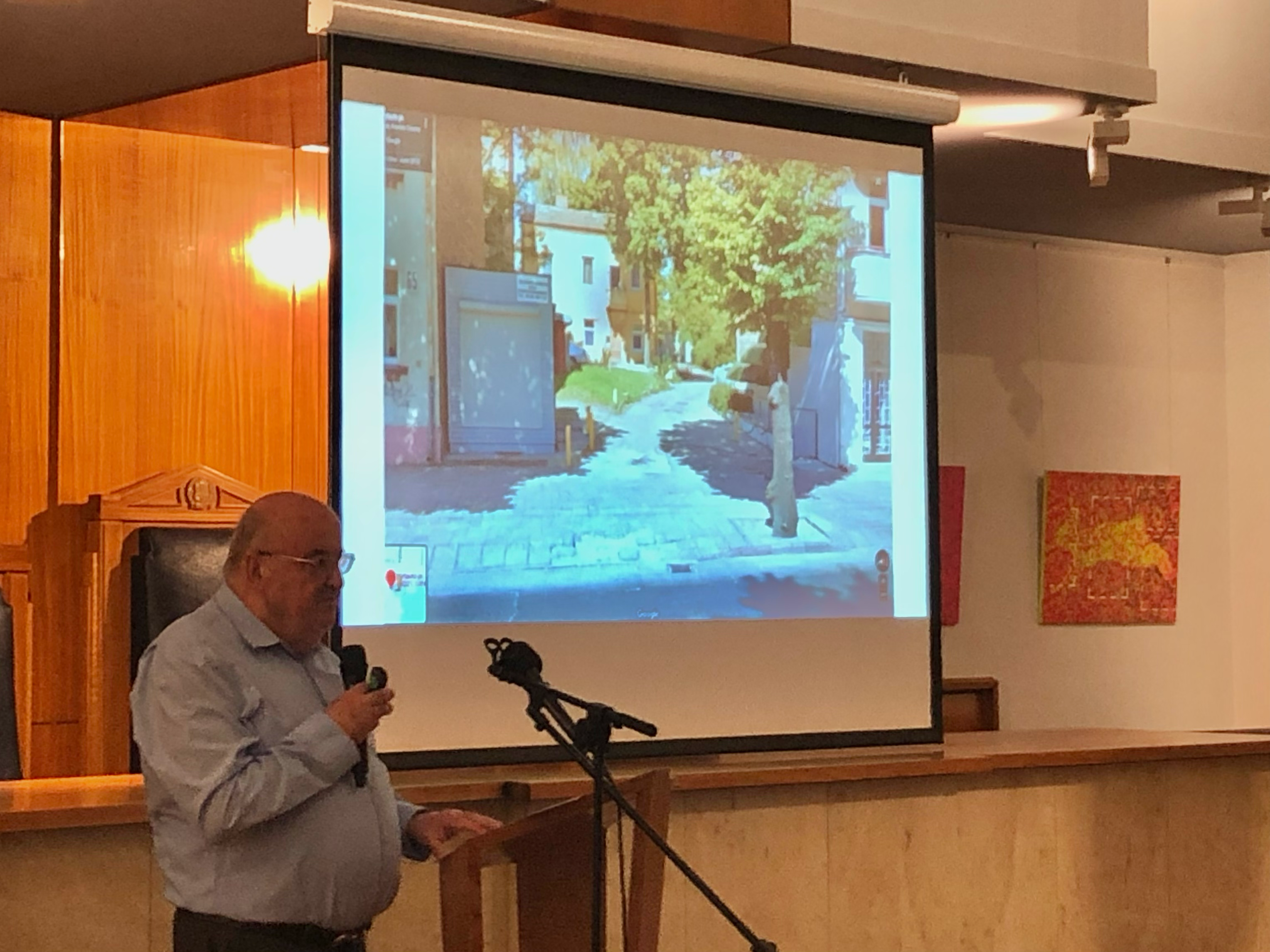New details have emerged about deceased Nazi collaborator Bob Sredersas, whose art donations helped establish the collection at Wollongong Art Gallery.
Last year, former Wollongong councillor Michael Samaris raised concern over alleged links to the Nazi SS in Lithuania, which was responsible for leading the murder of European Jews during World War Two.
The Sydney Jewish museum called in Holocaust historian Professor Konrad Kwiet to investigate Sredersas’s past, who spoke to a crowd of about 80 people at the art gallery yesterday.
Sredersas worked with the SS Criminal Police
Prof. Kwiest made a number of revelations during an investigation into Sredersas’s wartime record.
One of them came from an application Sredersas made in November 1943 to join the Waffen-SS, the organisation’s military wing.

“So this is what he puts in his application, that he is a public servant working for the SD (SS intelligence). And that’s the only what we would call ‘clear evidence’ that he volunteered to join the Waffen-SS, stating his position,” Prof. Kwiet said.
Prof. Kwiet did not reach a finding on if the application was successful.
While Sredersas’s exact involvement in the Holocaust remains unclear, Prof. Kwiet said his branch did carry out atrocities.
“As it also happened in Lithuania and elsewhere in Hitler’s empire, members of the Criminal Police participated in war crimes and crimes of the Holocaust,” Prof. Kwiet said.
“If the manpower of the security police or the Gestapo was not available or insufficient to carry out large scale Juden execution or mass deportation (…), then members of the Criminal Police, as well as members of any other German agency, were called in.
“This is a general description of what the Criminal Police were doing and not what he (Sredersas) might well have done.”
Prof. Kwiet said the function of Sredersas’s office, named 5.B.5, is unclear.
Sredersas slipped the net
“My first finding: like so many Nazi collaborators (…) Bronius Sredersas managed to evade criminal prosecution. His name was not brought to the attention of the Special Investigations Unit, Australia’s war crimes unit set up by the Hawk government,” Prof. Kwiet said.
“His name did not turn up on wanted war crimes lists of Lithuania, of Germany and of Australia. He was never, ever investigated or he was never ever called to give evidence in war crimes investigations or trials.
“He was an experienced criminal. He knew how to evade prosecution.”
Sredersas spent his early post-war years in displaced persons camps before he was accepted as a Lithuanian refugee and allowed to migrate to Australia, arriving in 1950 and working at the Port Kembla steelworks.
He died in 1982.
Questions around art gifted to Wollongong
Wollongong Lord Mayor Gordon Bradery told the crowd he did not rule out displaying the collection.
“We want to represent the truth and always represent that collection appropriately. That is not to say that the collection will not be displayed, but when we do so the narrative and the story that goes with it is correct and also respecting the fact that behind Sredersas might be a story (…) that is not necessarily a nice past,” Bradbery said.
Sydney Jewish Museum CEO Kevin Sumption declined to give advice on the collection, but said the investigation was an education opportunity.
“We look at this, first of all, fundamentally, as does the Board of Deputies, as an opportunity to open people’s eyes to an incredibly tragic chapter in European history that does reach Australia,” Sumption said.
“It’s not just a European history, it is actually an Australian history. Over 30 000 Holocaust survivors made their home in Australia from the early 1930s to the 1960s.”
During a question to Prof. Kwiet, former Secretary of the South Coast Labor Council, Paul Matters, said “it would be shameful for Wollongong Council to display those paintings on a wall.”
“They should be donated to the Jewish community,” Matters said.
Members of the Jewish Board of Deputies joined the lecture.





